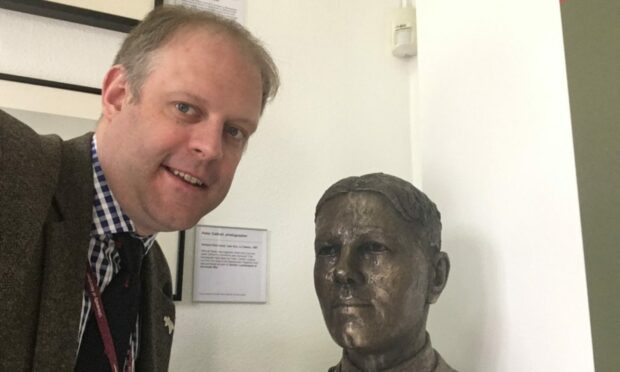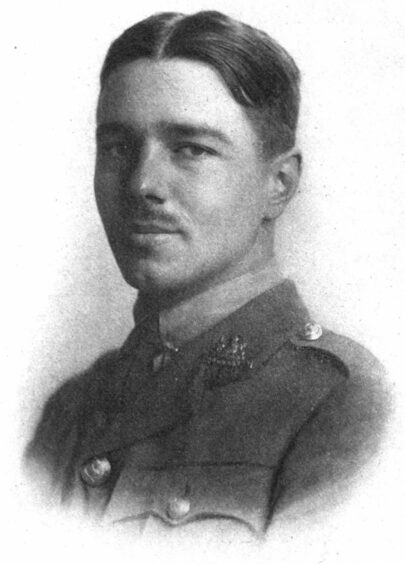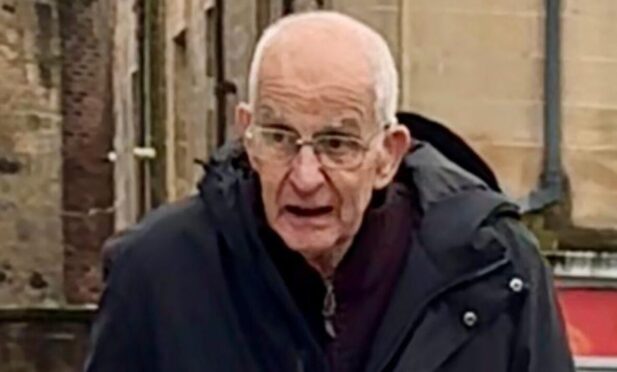A former head of history who’s now an author and senior academic in Aberdeen has slammed the outcome of an English exam board’s “diversity push”, after it ditched giants of literature including war poets Wilfred Owen and Siegfried Sassoon.
Neil McLennan, a former head of history at Tynecastle High School in Edinburgh who is now senior lecturer and director of leadership programmes at University of Aberdeen, is dismayed at the GCSE exam board’s decision to remove the famous First World War writers in favour of black, disabled and LGBT poets.
Why did the change happen?
The OCR exam body, which oversees A-levels and GCSEs in England and Wales, has taken the action to introduce “exciting and diverse” voices to its syllabus.
However, Mr McLennan says it’s a “bit ironic” given issues of “sexuality, equality and modern needs” have been talked about since the days of the literary classics.
He’s now writing to both the SQA in Scotland and the qualifications authorities in England and Wales to ask them to consider making sure that Owen and Sassoon remain a firm part of the curriculum.
“It’s all part of the changing landscape of education,” said Mr McLellan.
“It’s a bit nouveau riche – the new world and this is what they’re going with.
“But all they are really doing is throwing out good words that they can use as useful comparators.
“We can use modern history stories and poetry and compare it against Owen and Sassoon.
“Apart from anything else, most of the modern world was formed because of the First World War.
“America’s dominance, where China is, where Russia is, global power, conflicts in Europe, oil and gas and the way the money supplies work around the world – all of that was formed in that critical period of the First World War.
“By tossing out the studying of that, all we are doing is depriving kids of a full understanding of the conflicts and the world we live in today.
“We’ve got to make sure that while we’re now beyond the 100th anniversary (of the end of the First World War), while it’s easy to forget about it, First World War studies remain really central to the curriculum.”
Early-day ‘whistle-blower’
Mr McLellan, 42, who is also a councillor in Moray, spoke to The Courier following the launch of his new book Owen & Sassoon: The Edinburgh Poems.
Following a launch event at Craiglockhart in Edinburgh, where Owen, Sassoon and “shell-shocked” officers convalesced in 1917 and 1918, McLennan describes First World War officer Sassoon as an early-day “whistle blower”.
While Owen was a shell-shock victim, Sassoon was more of a “political prisoner”.
He had spoken out about the war in a letter to The Times newspaper.
His concerns were that the war had been prolonged and was not for the same defensive and liberation purposes that it started.
Sassoon was concerned for his men who were suffering in the trenches whilst the war rumbled on.
McLennan said that over the past two years, he’s seen the “plight and stresses” modern-day whistle blowers are put under with corporate bullying, gas-lighting and defamation.
This is related to his other work uncovering the mishandling of safeguarding enquiries.
In 1917, Sassoon was “blowing the whistle” almost 100 years before and in a very different era of control.
He was “calling out” the conduct of the war with the government, indeed challenging the whole British Empire in some ways.
Owen, meanwhile, spoke the truth about the horrors of war at a time when many were still being fed patriotism and fantasy about “the great adventure’.
“Owen’s warning- Dulce et decroum est pro patria mori was a stark warning,” he added.
“Sadly we need that warning now again today as conflict continues across parts of the globe, including Ukraine.”
Significance of Edinburgh hospital
McLennan’s new book slays several shibboleths about the war poets.
During the later months of 1917, Wilfred Owen and Siegfried Sassoon met while convalescing at Craiglockhart War Hospital in Edinburgh.
This fortuitous meeting would lead to some of the most powerful poetry written during the First World War.
Although Sassoon was already an established poet, it was during this time in Edinburgh that Owen was first published.
Some of his most vivid poems, including ‘Dulce et Decorum Est’ and ‘Anthem for Doomed Youth’ were written while in the city.
In publishing their poems written in Edinburgh – the first collection to bring together two of the most influential voices of a generation – the book explores the effect the city and its people had on both Owen and Sassoon, while seeking to understand the influence they had on each other.
It claims a wider socio-cultural set in Edinburgh also helped Owen develop his poetry.
That is a very different interpretation from previous scholars in this area, where the emphasis has often been England-focused and referencing a possible sexual relationship.
Indeed, McLennan goes into detail as to where Owen’s poems in particular are a blend of First World War experiences in France and what Owen was seeing and doing in Edinburgh.
Sassoon had also played golf at St Andrews while convalescing while Owen regularly visited Milnathort in Kinrosshire.
Author’s interest in Scottish war poetry
Mr McLennan’s interest in the First World War, and Scottish war poetry, can be traced to his great grandfather being in the Seaforth Highlanders.
He was next to the Scottish war poet Lieutenant Ewart Alan Mackintosh MC who was killed whilst observing the second day of the second Battle of Cambrai on November 21 1917.
McLennan’s particular interest in Owen and Sassoon was sparked during his time as head of history at Tynecastle High School.
His grandfather and grandfather’s sister had been pupils at the school, while his father had been the local police officer for Gorgie.
“When I was at the school, one of the things we were looking at was former students who’d gone on to great things,” said Mr McLellan.
“We had Gary Mackay who played for Hearts and Scotland.
“But then we found that Wilfred Owen had actually taught English at the school.”
At the time, shell shock victims could be treated with some “draconian” methods.
But when Owen was sent to Craiglockhart War Hospital, he “landed on his feet”.
“At that time there were six specialist hospitals across the UK for officers, and it just so happened the only one in Scotland – Craiglockhart – had this Dr Arthur John Brock and also Dr Rivers,” said Mr McLennan.
“The two of them were inspirational pioneering figures who were pushing against military authorities and were pioneering new approaches.
“Ultimately, Brock was pioneering I guess what we’d call today occupational therapy.
“Dr Rivers who was Sassoon’s doctor was pioneering what we’d call today counselling. He called it the talking cure.
“These two doctor figures are inspiring the war poets.
“They are in Edinburgh and forging new ways to treat mental health challenges which are so important still today.”
The ‘doomed generation’
Mr McLennan says Gorgie people would have been well aware of ‘McCrae’s Battalion’ – the first of the so-called ‘footballers’ pals’ battalions.
Sixteen players from Heart of Midlothian FC enlisted along with 500 supporters and ticket-holders.
In addition, players and 150 followers of Hibernian, seven Raith Rovers players and a number of professionals from other clubs including Dunfermline Athletic, East Fife and Falkirk signed up.
In Owen’s poem called Disabled, there are various football mentions.
However, Owen’s time teaching at Tynecastle High School also influenced his poem Anthem for Doomed Youth.
“I’m pretty sure that was because the kids he was seeing at Tynecastle High School were the sort of doomed generation,” said Mr McLennan.
“They hadn’t died yet, but if this war continued, they were the next generation who were going to be lambs to the slaughter on the battlefield.
“The other aspect of it that links it very closely to Edinburgh is this sense of the soldiers being like cattle.
“Right at the very start of the poem there’s a famous line where he says ‘what passing bells for these who die as cattle?’
“From Craiglockhart War Hospital down to Tynecastle you would have had to pass the railway station at Slateford in Edinburgh.
“There was a special siding at that time for the cattle trains to drop off the cattle and then they’d be taken across the road to the meat market.
“There’s absolutely no doubt that Owen walking past and seeing these cattle going to the slaughter was an analogy for him of what was happening in the First World War.”
Owen himself was killed in action aged 25 on November 4, 1918 – just a week before Armistice Day.
How to get the book
Owen & Sassoon: The Edinburgh Poems, published by Polygon (an imprint of Birlinn) is out now, £12.


















Conversation